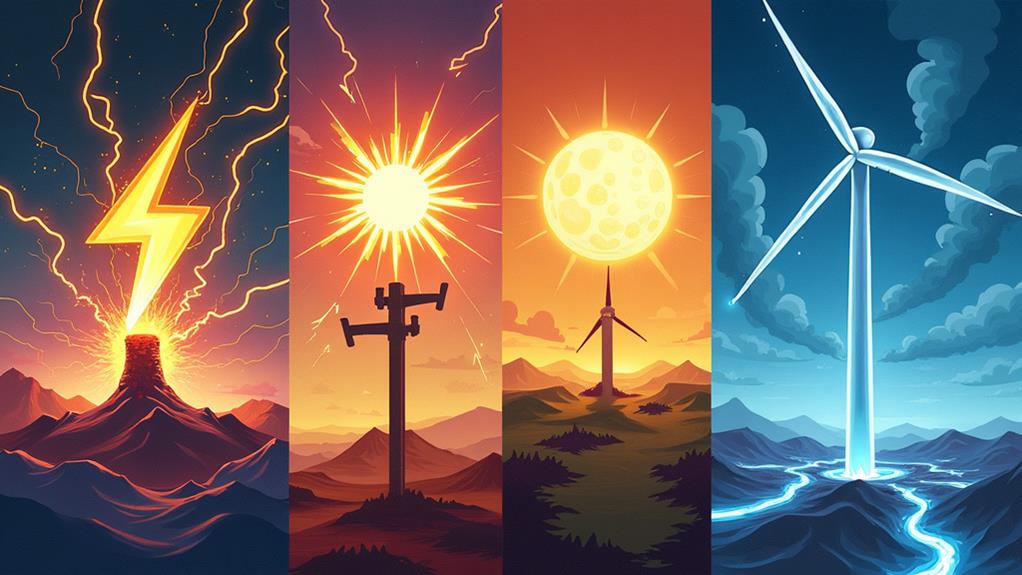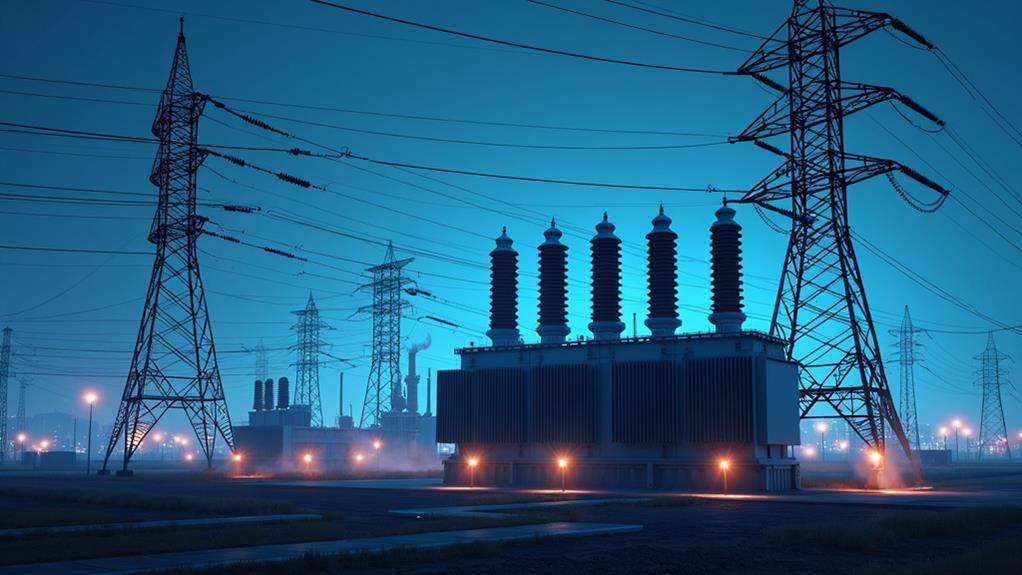What Are the Four 4 Types of Electricity?

Electricity can be categorized into four distinct types: static electricity, current electricity, alternating current (AC), and direct current (DC). Each type has unique characteristics and applications that influence how our homes are powered and how our devices function. Static electricity arises from an imbalance of charges, whereas current electricity involves the continuous flow of electric charges.
Alternating current (AC) and direct current (DC) are two types of current electricity. AC periodically reverses direction, making it ideal for transmitting power over long distances and powering household appliances. In contrast, DC flows in a single direction, commonly used in batteries and electronic devices.
Understanding these differences reveals how each type of electricity shapes modern technology and daily life. By comprehending the roles of static electricity, AC, and DC, we can better appreciate their impact on our everyday experiences.
Static Electricity

Why does your hair stand on end when you rub a balloon against it? It's all about static electricity. When you rub a balloon against your hair, the friction between the two causes an imbalance of electric charge. Electrons, which are negatively charged particles, transfer from your hair to the balloon. This leaves your hair positively charged and the balloon negatively charged.
Static electricity occurs due to this imbalance of electric charge on the surfaces of materials. Unlike in other forms of electricity, there is no continuous flow of electric charge in static electricity. The charged balloon attracts the positively charged hair, making it stand on end due to the attraction between opposite charges.
This phenomenon isn't just limited to amusing party tricks. You've probably felt a small shock after touching a metal object or noticed how lightning dramatically lights up the sky. That's static electricity at work. In more controlled settings, it has practical applications. For example, photocopiers and laser printers use controlled static charges to attract toner to paper, creating your printed documents.
Understanding static electricity and its effects reveals a world of everyday interactions and advanced technological applications driven by the simple movement of electrons.
Current Electricity
Current electricity, unlike static electricity, involves a continuous flow of electric charge through a conductor. This flow rate is measured in amperes (A) and requires a closed circuit to operate. Conductors like copper wire are essential because they facilitate the flow of electricity, enabling efficient energy transfer to power various devices and systems.
Imagine the flow of current electricity as a river. Electrons move through the conductor, transferring energy to where it is needed. This flow can be classified into two types: Direct current (DC), which flows in a single direction, and Alternating current (AC), which periodically reverses direction. Both types are fundamental for understanding how electrical systems utilize energy.
As current electricity travels through conductors, it generates heat. This heating can impact the efficiency of electrical systems and is a principle employed in electric heating applications. Grasping these basics helps you understand how energy flows and powers everyday devices.
Here's a quick comparison:
| Property | Direct Current (DC) | Alternating Current (AC) |
|---|---|---|
| Direction of Flow | One direction | Periodically reverses |
| Common Uses | Batteries, Electronics | Home Power Supply |
| Efficiency | Lower over distances | Higher over distances |
| Heating Effect | Present | Present |
Understanding these key points ensures a solid grasp of current electricity and its applications in modern technology.
Alternating Current (AC)

Alternating Current (AC) is a form of electricity where the direction of the electric charge flow periodically reverses, typically at a frequency of 50 or 60 Hz, depending on the region. This characteristic makes AC the standard for electricity supplied to homes and businesses. One major advantage of AC is its efficiency in transmitting power over long distances with minimal energy loss.
In an AC system, the voltage varies with time, allowing the use of transformers to step up the voltage for long-distance transmission and step it down for safe usage in households. This ensures that the electricity reaching your home is at a safe and usable voltage level. Most household appliances, like refrigerators and air conditioners, are designed to operate on AC electricity, conveniently delivered through wall outlets.
The widespread use of AC power systems is largely credited to Nikola Tesla. His innovations demonstrated how AC could easily convert between different voltage levels through electromagnetic induction, making it a versatile and efficient choice for delivering electric energy. Thanks to AC, you can enjoy reliable and efficient electricity for all your household needs.
Direct Current (DC)
While Alternating Current (AC) is the standard for most household power needs, Direct Current (DC) is crucial for various other applications. DC is characterized by the unidirectional flow of electric charge, meaning the current travels in only one direction through a circuit. This makes DC particularly suitable for low-voltage applications where a stable voltage is critical.
DC is commonly produced by batteries and solar panels. Batteries generate DC through chemical reactions, while solar panels use photovoltaic cells to create a steady voltage output. This stable voltage is ideal for charging electronic devices and powering small appliances, ensuring that your gadgets receive a consistent energy supply necessary for their proper functioning.
DC is widely used in electronic circuits and devices, including computers, LEDs, and electric vehicles. Its predictable voltage simplifies the design and operation of these technologies. However, integrating DC into larger-scale power distribution systems requires specialized converters.




